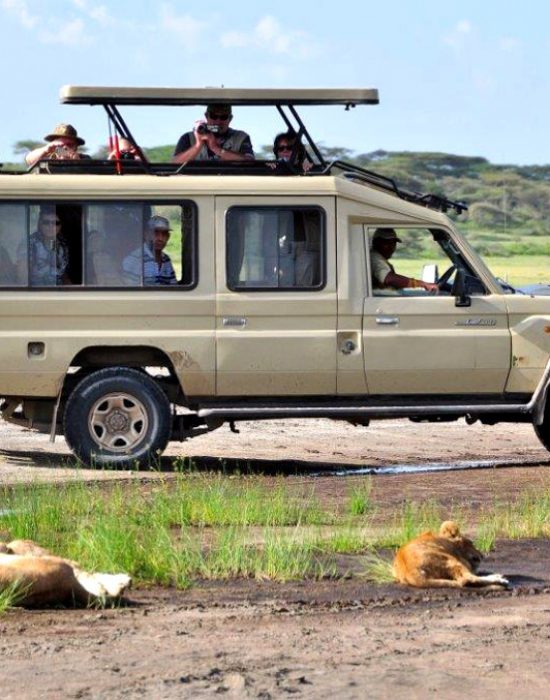nGORONGORO
cRATER
The Ngorongoro Crater was formed when a large volcano erupted and collapsed on itself.
When undertaking a Tanzania safari, the Ngorongoro Conservation Area is a UNESCO World Heritage Site located to the west of Arusha in the Crater Highlands of Tanzania. To the northwest, it adjoins Serengeti National Park and to the south and west are volcanic highlands that include Ngorongoro Crater. Southern and eastern borders run along the Great Rift Valley.

About Maasai in Ngorongoro
In Ngorongoro Conservation Area, the Maasai people thrive amidst the wildlife. Their nomadic lifestyle and vibrant culture, characterized by colorful attire and intricate beadwork, have endured for generations. Living in traditional bomas, they coexist with wildlife, practicing sustainable herding and contributing to conservation efforts. Some diversify into tourism, offering cultural experiences to visitors. Despite challenges like land encroachment, the Maasai remain stewards of their land, preserving their heritage while embracing the future.
Conservation Area
And the People there
Approximately 40,000 people live in the conservation area. There are around 30,000 animals ranging from leopard, cheetah, elephant and hyena to warthog, buffalo and impala. The area is also one of the best places to see the endangered black rhino and black-maned male lions. Black Rhinos were brought back from the brink of extinction and now their population, has bounced back to over 5,000 worldwide, about 30 of which can be found at Ngorongoro Crater.
Facts about Ngorongoro
The Ngorongoro Conservation Area is truly a marvel of nature, earning the endearing nickname “the Garden of Eden” for its unparalleled beauty and its status as a haven for wildlife. However, one notable absence from this paradise is the giraffe. The sides of the Ngorongoro Crater are too steep for giraffes to descend, leading to their exclusion from this breathtaking landscape. Interestingly, despite their absence within the crater, giraffes can still be spotted in the surrounding areas, adding to the area’s diverse wildlife population. Additionally, the conservation area has caught the eye of Hollywood, serving as a backdrop for parts of the Oscar-winning movie Out of Africa, further cementing its status as a cinematic and natural wonder.

What we Offer
- Wildlife Safari
- Mountains Trekking and Hiking
- Beach Tour
- Cultural Excursions
- Sun, Sand Seekers Holidays
- Community Development Projects
© 2022 Copyright Miiso safaris and Adventure. All rights reserved





